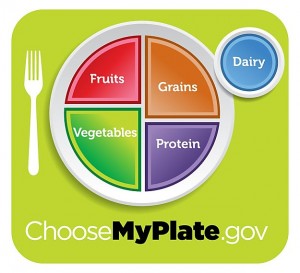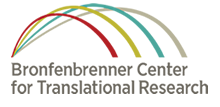 The evidence shows that high school dropouts earn less money, have poorer health outcomes and are more likely to get into legal trouble. And teenagers who are pregnant or who are parents are especially vulnerable to dropping out of school. There are hundreds of programs designed to keep teens in school. But how effective are they, especially for pregnant and parenting teens?
The evidence shows that high school dropouts earn less money, have poorer health outcomes and are more likely to get into legal trouble. And teenagers who are pregnant or who are parents are especially vulnerable to dropping out of school. There are hundreds of programs designed to keep teens in school. But how effective are they, especially for pregnant and parenting teens?
How to keep teen parents in school
Evaluating programs to promote teen sexual health
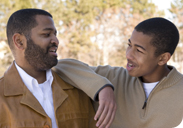 Teenagers and young adults represent only 25 percent of the sexually active population in the U.S., but they acquire nearly half of all new sexually transmitted infections, according to the U.S. Centers for Disease Control. [Read more…]
Teenagers and young adults represent only 25 percent of the sexually active population in the U.S., but they acquire nearly half of all new sexually transmitted infections, according to the U.S. Centers for Disease Control. [Read more…]
The serious effects of physical discipline
There are many factors that influence how parents discipline their children: parents’ own upbringing, family customs and stress levels all factor in. But there is clear evidence that some forms of discipline – specifically physical punishment – have negative effects on children throughout their lives.
A new systematic review reveals a body of evidence demonstrating physical punishment may increase the chances of antisocial behavior and aggression, depression, anxiety, drug abuse and psychological problems later in life.
The review is especially interesting because it discusses intervention programs designed to reduce physical punishment and child abuse. It included a trial of one intervention that taught parents to reduce their use of physical punishment, which led to less difficult behavior by their children.
Another such program – called Triple P – originated in Australia was tested in a study funded by the U.S. Centers for Disease Control. The program uses a broad range of strategies to address physical abuse including consultations with parents, public seminars and public service announcements on local media. It led to significantly positive results that are encouraging if replicated in other areas of the U.S. Counties that implemented the program had lower rates of substantiated child abuse cases, fewer instances of children removed from their homes and reductions in hospitalizations and emergency room visits for child injuries.
John Eckenrode, professor of human development and director of Cornell’s Bronfenbrenner Center for Translational Research, is an expert in child abuse and maltreatment. He’s written a chapter about preventing child abuse in the book Violence against women and children, published by the American Psychological Association.
“We know that there are tested and effective ways to support parents so that they can better provide a safe and supportive environment for their children without resorting to physical punishment,” he said. “But we must get the word out, provide those who interact with parents such as teachers and physicians with the tools they need to promote positive parenting strategies, and provide resources to states and localities to scale-up effective programs.”
The take-home message: Physical punishment and child abuse are serious problems that have life-long effects. But there is a growing body of evidence that intervention programs can help guide parents to other methods of discipline.
The evidence shows preschool matters!
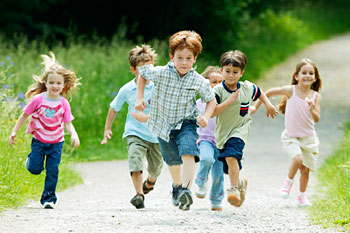 We have heard educators and politicians alike tout the virtues of early childhood education, and how it prepares kids for a lifetime of learning. With one of my own children in preschool and another one headed there shortly, I’m always interested in the evidence on this stage learning. Do activities like playing with blocks and paints, sitting through circle time and learning to share really impact a child for the rest of his life?
We have heard educators and politicians alike tout the virtues of early childhood education, and how it prepares kids for a lifetime of learning. With one of my own children in preschool and another one headed there shortly, I’m always interested in the evidence on this stage learning. Do activities like playing with blocks and paints, sitting through circle time and learning to share really impact a child for the rest of his life?
So I was fascinated to follow a series of reports on National Public Radio that detail some interesting evidence about preschool programs. While these reports didn’t include a systematic review, they did include several different longitudinal studies that make an interesting case about the importance of preschool.
On the show This American Life, host Ira Glass talks with a range of experts – a journalist, an Nobel-prize winning economist and a pediatrician – about the evidence on what researchers call “non-cognitive skills” like self-discipline, curiosity and paying attention.
One of the leading experts in this field is an economist at the University of Chicago named James Heckman. His work has found that these soft skills are essential in succeeding in school, securing a good job, and even building a successful marriage. Heckman found that children learn these skills in preschool.
One well-known longitudinal study followed a group of low-income 3- and 4-year-olds in Ypsilanti, MichiganThese children were randomly assigned to attend preschool five days a week, or not attend any preschool. After preschool, all of the children went to the Ypsilanti public school system.
The study found that children who attend preschool were more successful adults. They were half as likely to be arrested and earned 50 percent more in salary. Girls who attended preschool were 50 percent more likely to have a savings account and 20 percent more likely to have a car.
Another similar project conducted in North Carolina found that comparable results: Individuals who had attended preschool as children were four times more likely to have earned college degrees, less likely to use public assistance, and more likely to delay child-bearing.
There is more evidence too. NPR’s Planet Money aired a show earlier this year demonstrating further evidence about the benefits of preschool. And researchers at the University of Texas in Austin found that preschool reduces the inequalities in early academic achievement.
The take-home message seems to be: Preschool matters!
Evidence-based Thanksgiving: Is giving thanks good for you?
I have talked to a lot of people who identify Thanksgiving as their favorite holiday. As reasons for this they note that it has the benefits of family, friends, and food without the consumerist insanity that surrounds Christmas. The symbolic importance of Thanksgiving is indicated by the fact that it creates the busiest travel time, with 42.2 million people taking a trip of at least 50 miles.
But how often do we do what the name of the holiday implies: That is, actually give thanks for things? The emotion that encompasses that act is gratitude, which the dictionary defines as “a feeling of thankfulness or appreciation.” Science can’t tell us whether Thanksgiving is good for you, but we at Evidence-Based Living wondered: What about giving thanks? Is there evidence that gratitude itself has benefits?
It turns out that there is a significant scientific literature on gratitude. A comprehensive review of the research was recently conducted by Alex Wood, Jeffrey Froh, and Adam Geraghty that helps answer the question: Is gratitude good for you? They look at how gratitude promotes well-being and then move beyond that question, examining intervention programs that attempt to achieve positive outcomes by promoting gratitude.
The authors note that although we may feel grateful for specific events, gratitude can also be seen as “part of a wider life orientation towards noticing and appreciating the positive in the world.” (I’ve heard the expression an “attitude of gratitude.”) Some people are more likely to notice and appreciate the positive in life than others are. And this orientation seems to protect people from psychological distress.
Wood and colleagues’ review shows that gratitude is negatively related to depression. In one study, an attitude of “thankfulness” reduced the risk of such disorders as major depression, generalized anxiety disorder, and drug abuse. Gratitude has also been found to help people adjust to traumatic life events and their aftermath. On the positive side, a dozen studies have found a positive relationship between gratitude and feelings of well-being.
An important question is causality: It could be that less depressed people are more likely to be grateful,rather than the opposite. To answer this question, scientists have developed intervention programs to promote feelings of gratitude and then looked at the effects in experiments. The authors review 12 studies that examined the effects of interventions such as daily listing of reasons to be grateful, grateful contemplation (thinking or writing more generally about gratitude), and behavioral expressions of gratitude (actually thanking another person).
The findings are very encouraging, with programs that promote gratefulness resulting in statistically significant increases in positive emotion, decreases in negative emotion, and reduced worry. A study of adolescents even found an increase in satisfaction with school after a gratitude intervention. More research of course needs to be done, but based on this review promoting gratitude seems to make sense to improve well-being.
An appealing part of the gratitude list idea is its simplicity. Anyone can do it – interventions are as straightforward as listing 3-5 things for which one is grateful before going to bed. Why not try it? Or get the turkey-sated crew around the Thanksgiving table to make a list before dozing off in front of the football game!

A clearinghouse of education evidence
 Parents across the nation send their children to public schools with the confidence that principals and teachers are providing an environment where children can learn, grow and thrive.
Parents across the nation send their children to public schools with the confidence that principals and teachers are providing an environment where children can learn, grow and thrive.
We hear so much about in the news about ways to improve our education system – especially in this presidential election year, when candidates are offering proposals and counter-proposals to fix our schools.
But is there any evidence as to what really works? As a parent of young children, our schools are one important place where I want to see evidence-based guidelines put in place.
The best place I’ve found for evidence-based information on education is called the What Works Clearinghouse, an initiative by the U.S. Department of Education that conducts systematic reviews on education research to provide educators with the information they need to make evidence-based decisions.
The project is a true treasure trove of information, with research reviews on a myriad of topics including dropout prevention, school choice, early childhood education and student behavior, to name just a few.
On a recent cruise through the site, several topics piqued my interested including:
- A presentation on how to move evidence-based programs into practice.
- A systematic review of character education curriculums.
- A study on the role of board games for improving numeracy skills among low-income preschoolers.
I’m certainly going to share this amazing resource with my son’s teachers, and use to gather information about the curriculums he’ll be learning in elementary school. As a parent, it’s a relief to know there’s a place to look for reliable, evidence-based information on education.
The evidence on child abuse
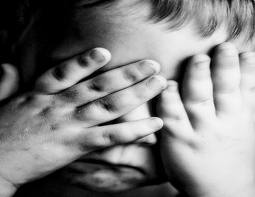 No one needs an academic study to understand that child abuse and neglect has horrible effects on children and families. The toll on young people and their caregivers – emotionally, socially and developmentally – is tremendous. But the problem also takes a broader toll on our health care system and society as a whole.
No one needs an academic study to understand that child abuse and neglect has horrible effects on children and families. The toll on young people and their caregivers – emotionally, socially and developmentally – is tremendous. But the problem also takes a broader toll on our health care system and society as a whole.
A new study from the U.S. Centers for Disease Control quantifies the toll on society in financial terms. The study examined nearly 600,000 confirmed child maltreatment cases over the course of a year. Approximately 1,740 of the cases resulted in the death of a child. It found the financial costs associated with these cases to be $124 billion, which includes the costs of medical care, special education, the criminal justice system and lost productivity.
Researchers totaled the lifetime cost for each victim of child maltreatment who lived at $210,012 – a figure the matches the cost of other health conditions such as stroke, which has lifetime cost per person estimated at $159,846, or type 2 diabetes, which is estimated between $181,000 and $253,000.
Much of the data for the study came from a project at Cornell called the National Data Archive on Child Abuse and Neglect (NDACAN), housed in the Bronfenbrenner Center for Translational Research (BCTR). The project makes high-quality datasets available to researchers, including data from individual studies and annual federal data collection efforts, such as state child abuse and neglect and foster care statistics.
“This study very likely underestimates the actual burden as we learn more about the impact of early childhood adversity on brain development and health and well-being across the life span,” said John Eckenrode, director of NDACAN, professor of human development and director of the BCTR.
“Fortunately, there are now evidence-based programs that may prevent child maltreatment and the associated costs to society,” he said. Among them is the Nurse Family Partnership, a program founded at the College of Human Ecology that aims to improve the lives of disadvantaged mothers and their children.
The take home message: Child abuse and neglect is a big problem. The better we can understand its intricacies and impacts, the better we’ll be able to prevent it in the future.
A new tool to help you lose weight
Are you making any diet and exercise resolutions this year? I sure am.
Just in time to help us along, the federal government has launched a new online tracking system. The system is based on the part of a new, evidence-based initiative to improve the diets of Americans that we’ve written about before here on EBL.
It includes tools to calculate the nutritional information of more than 8,000 foods, tally daily calorie consumption and track physical activity. You can set weight loss goals, create reports and receive individualized tips about how to improve.
Admittedly, this kind of tool isn’t for everyone. I know people who crave data – my husband is like this -who love generate graphs and reports showing exactly how many calories they’re consuming and expending. Others find this kind of tracking monotonous and discouraging.
No matter which camp you fall into, the evidence does show that it’s beneficial to track your food consumption – something the new tool will certainly help with. In fact, a systematic review published last year in the Journal of the American Dietetic Association concluded that there is a “consistent and significant positive relationship between self-monitoring diet, physical activity or weight and successful outcomes related to weight management.” (You remember how much we love systematic reviews, right?)
The article reviewed 22 studies that looked at self-monitoring during weight loss programs. Fifteen of the studies focused on keeping a food journal, one looked at keeping an exercise journal, and six tracked subjects who recorded their weight at least once a week.
Researchers found that both written and electronic journals helped with weight loss. They also found that that people kept a weekly record of their weight lost more than those who weighed themselves less frequently.
So if you’re aiming to drop a few pounds in 2012, check out the government’s new tool. It might be just what you need to jump start your New Year’s resolution.
The evidence on pain: A new blog
 Millions of older adults throughout our country live with chronic pain – a disabling and costly disorder. Two years ago, Cornell helped establish an evidence-based center in New York City called the Translational Research Institute for Pain in Later Life, or TRIPLL, to help older adults prevent and manage their pain.
Millions of older adults throughout our country live with chronic pain – a disabling and costly disorder. Two years ago, Cornell helped establish an evidence-based center in New York City called the Translational Research Institute for Pain in Later Life, or TRIPLL, to help older adults prevent and manage their pain.
TRIPLL is a collaboration between six institutions: Weill Cornell Medical College, Cornell-Ithaca, Columbia University’s Mailman School of Public Health, Hospital for Special Surgery, Memorial Sloan Kettering Cancer Center and Visiting Nurse Service of New York and Council of Senior Centers & Service of NYC, Inc.
The center aims to build evidence-based practices for pain prevention and treatment, and then disseminate that information to older adults in New York City.
Now the center has launched a blog — http://tripll.org/blog/ — to share research-based information to help those dealing with chronic pain. The blog covers the latest pain research, and also share stories of people living and coping with chronic pain.
“Poorly treated pain has profound consequences for older adults,” said TRIPLL director M. Cary Reid, a geriatrician at Weill Cornell Medical Center. He estimates that as many as 40 percent of seniors living independently in the U.S. suffer from chronic pain.
“Unfortunately, older adults and their doctors often dismiss chronic pain as part of aging, causing it to be neglected,” he said. “We want to raise this overlooked issue and improve how we treat pain in older adults.”
If you or someone who love copes with chronic pain, the TRIPLL blog is a must-read to find out what the evidence says about pain management and hear stories from others coping with chronic pain.
“You can’t say, ‘You can’t play.’”
 Over dozens of years in the classroom, author and veteran kindergarten teacher Vivian Paley noticed a disturbing trend among her students: Each year, some children developed the power to create the games, make the rules, and decide who was allowed to play and who would be left out.
Over dozens of years in the classroom, author and veteran kindergarten teacher Vivian Paley noticed a disturbing trend among her students: Each year, some children developed the power to create the games, make the rules, and decide who was allowed to play and who would be left out.
So Paley decided to make a new rule in her classroom: “You can’t say, ‘You can’t play.” Paley documented the children’s reaction to the new rule with audio recordings. (You can hear some of them in an episode of the NPR show This American Life.)
The following year, Paley’s rule was expanded to her entire school. She’s written a book on the experiment. And, since then, educators across the country have adopted the rule and studied its implications. My own son’s preschool subscribes to the rule, so I thought I’d do a little digging to find out what the research says about it.
While there is no meta-analysis available to date on “You can’t say, ‘You can’t play,” studies have shown the rule improves social acceptance among kindergarteners. The non-profit research center Child Trends implemented an intervention program among 144 kindergarteners that involved storytelling and group discussion to help children become more aware the different ways they may exclude their peers and learn ways to act in more accepting ways. Their study found that children in the program felt more accepted by their peers compared to the control group.
Another study investigated teacher’s perceptions about inclusive play for young children. The found programs to implement the rule must involve training and on-going support to help teachers communicate the rule to students and deal with problems that emerge as students struggle with inclusive play.
On the whole, I’m impressed with the data available on “You can’t say, ‘You can’t play.’” It seems to be a positive way to teach young children about social acceptance and diversity. This is one area, though, where I’d love to see some more comprehensive research or a literature review to clarify all of the benefits to our children.
Happy Birthday to Cooperative Extension!
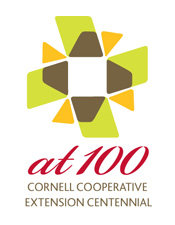 As Cornell Cooperative Extension celebrates its 100th year, I thought it would be a good time to explain about bit about the Cooperative Extension system. At Cornell, many of us collaborate with Cooperative Extension regularly. But those of you in the real world might be thinking, “What the heck is Cooperative Extension, and why does it matter to me?”
As Cornell Cooperative Extension celebrates its 100th year, I thought it would be a good time to explain about bit about the Cooperative Extension system. At Cornell, many of us collaborate with Cooperative Extension regularly. But those of you in the real world might be thinking, “What the heck is Cooperative Extension, and why does it matter to me?”
The Cornell Cooperative Extension system was created a century ago to serve a function similar to what this very blog serves today – to help share evidence-based information and practices with the general public.
In the age before the Internet, this meant disseminating information in workshops, classes and even visits to local homes and businesses. So the Cooperative Extension system opened offices in local communities with employees who would gather information from university professors, and then disseminate that information to people local communities.
In New York State, the first such office opened in 1911 by a Cornell graduate named John H. Baron. Over the next eight years, 54 more extension offices opened across New York State.
Over the years, Cooperative Extension programs educated New York businesses and families everything from the safest way to defrost a turkey to the best methods for irrigating strawberry fields.
This system developed into a two-way street where community members and businesses pose questions that are funneled to university researchers, who conduct research to find the answers.
Today, Cornell Cooperative Extension is focused on helping families, businesses, government agencies, and other organizations in five key areas: agriculture and food systems; children, youth and families; community and economic vitality; environment and natural resources; and nutrition and health. Cooperative Extension professionals provide information on contemporary issues including renewable energy, early childhood education and cooking with local foods.
The Cooperative Extension System is truly an invaluable resource for helping people and organizations from all walks of life make decisions based on the best available evidence.

